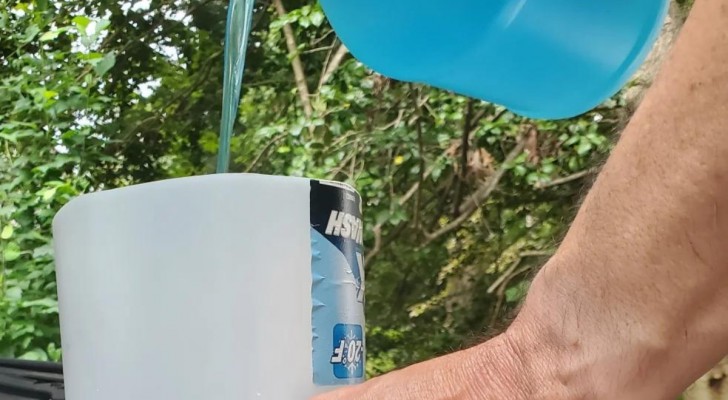Is the color of windshield washer fluid important for proper cleaning?

Maintaining a consistently clean windshield, free from dust and dirt, is crucial for ensuring optimal visibility and, consequently, enhanced safety while driving. Regularly assessing the condition of our windshield wipers is the initial step in proper windshield maintenance. Additionally, the windshield washer fluid plays a pivotal role, as it should always be available in the reservoir to ensure immediate cleaning during our journeys.
Currently, a variety of windshield washer fluids are available in the market, coming in different types and colors depending on the chosen brand. Although selecting the most suitable fluid may seem trivial, it is, in fact, essential for effective windshield cleaning and, by extension, for ensuring maximum safety while driving. However, navigating through the diverse product features can sometimes be challenging.
Does the color of the fluid significantly impact its cleaning capabilities? More importantly, can different-colored fluids be mixed without compromising effectiveness or causing damage to our vehicle? Let's explore these questions in the brief guide below.
The importance of colors in windshield washer fluid

Windshield washer fluid is commonly found in the traditional blue color, but various brands offer fluids in different hues. Currently, the different colors of windshield washer fluids are primarily chosen for cosmetic reasons, as there is no universal standard. However, these colors often indicate specific functionalities:
- Blue: Standard degreaser suitable for various uses.
- Green: Typically used for its effectiveness in insect removal.
- Orange or yellow: Geared towards summer or all-season driving.
- Purple: Often signifies a fluid with winter-specific antifreeze.
When selecting windshield washer fluid, it's crucial to carefully read the label instructions. While many manufacturers follow the color-coded classification, it's not an absolute rule. While the standard blue fluid is a reliable choice, a more thoughtful decision can be made based on individual needs. For instance, opt for insect-resistant fluid for highway travel or antifreeze fluid in extremely cold climates. If your vehicle has rain sensors, choosing a fluid that leaves no streaks or residue is preferable to avoid interference with the sensors.
Mix of different colors and DIY

Predominantly consisting of water and additives like ethanol, isopropyl alcohol, ammonia, dyes, mild degreasers, and, in antifreeze detergent, ethylene glycol, windshield washer fluid has different compositions based on its color. Consequently, it's preferable not to mix fluids of different colors. Nevertheless, such mixing won't harm your vehicle; it will merely diminish the performance of each individual detergent. For example, combining antifreeze fluid with a generic one may reduce its efficacy in low temperatures due to an elevated freezing point. Similarly, blending insect-resistant fluid with another may lead to ineffective removal of insects from the windshield.
For those wanting DIY solutions and contemplating making windshield washer fluid at home, consider using ammonia and dish soap. Combine 4 liters of water (preferably demineralized to prevent limescale deposits) with a tablespoon of dish soap and 120 ml of ammonia in a container. Mix the components carefully to avoid excessive foaming. Your homemade windshield washer fluid is now ready for use.
Have a safe trip!